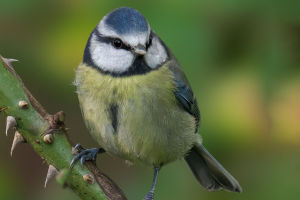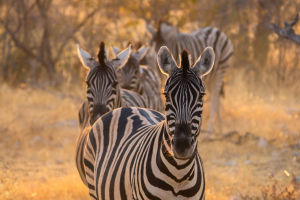
The Funniest Animal

Kangaroos are one of the most iconic animals native to Australia, often recognized for their distinctive hopping and unique reproductive behavior.
Here are some intriguing facts that highlight the fascinating nature of these marsupials.
1. Marsupial Characteristics
Kangaroos belong to the marsupial family, meaning they carry and nurse their young in a pouch. This family also includes animals like wallabies and koalas. The pouch, located on the front of the female kangaroo's body, provides a safe space for the joey (baby kangaroo) to continue developing after birth. The joey stays in the pouch for about six months before starting to explore the outside world.
2. Unique Reproductive System
Related
 Birds singing complex, rhythmic tunes for courtship, territory marking, and social interaction.
Birds singing complex, rhythmic tunes for courtship, territory marking, and social interaction.
 Unveil a big myth of the ocean in weird shapes with us from this blog!
Unveil a big myth of the ocean in weird shapes with us from this blog!
 Zebras' wild nature and unique traits make them resistant to domestication despite human efforts.
Zebras' wild nature and unique traits make them resistant to domestication despite human efforts.
 Unlock the mystery of your cat's unique vocalizations and body language to build a deeper bond.
Unlock the mystery of your cat's unique vocalizations and body language to build a deeper bond.
 Why Do Cats Imitate Their Owners and Other Cats?
Why Do Cats Imitate Their Owners and Other Cats?
 Adélie penguins, iconic for their black-and-white feathers, thrive in Antarctica's harsh environment.
Adélie penguins, iconic for their black-and-white feathers, thrive in Antarctica's harsh environment.
One of the most remarkable aspects of kangaroo reproduction is embryonic diapause, a process that allows the female to delay the development of an embryo until conditions are favorable. This means a female kangaroo can be perpetually pregnant, carrying one embryo in a dormant state, one joey in the pouch, and one young kangaroo at her side. This adaptation ensures that kangaroos can reproduce efficiently and maximize their survival chances in the wild.
3. Incredible Hopping Ability
Kangaroos are the only large animals that use hopping as their primary mode of locomotion. This method is highly efficient, allowing them to cover great distances with minimal energy expenditure. A kangaroo can hop at speeds of up to 25 kilometers per hour (15 miles per hour) for long periods and can reach speeds of up to 70 kilometers per hour (44 miles per hour) in short bursts. Their powerful hind legs and large feet are specially adapted for this unique movement.
4. Social Structure
Kangaroos are social animals that live in groups called mobs or troops. These groups can range from a few individuals to over a hundred kangaroos, depending on the availability of food and water. The social structure within a mob is typically hierarchical, with dominant males, known as boomers, leading and defending the group. This social organization helps them protect each other from predators and find resources more efficiently.
5. Diet and Digestion
Kangaroos are herbivores, primarily feeding on grasses and leaves. They have a unique digestive system that allows them to extract maximum nutrients from their fibrous diet. Their stomachs are divided into several chambers, similar to those of ruminants like cows. This multi-chambered stomach enables them to ferment and break down tough plant material, making their digestive process highly efficient.

6. Adaptations to Arid Environments
Kangaroos are well-adapted to the arid and semi-arid environments of Australia. They can survive with little water for extended periods, obtaining moisture from the plants they eat. Additionally, kangaroos are crepuscular, meaning they are most active during the cooler parts of the day, such as dawn and dusk. This behavior helps them avoid the extreme heat of the Australian outback.
7. Unique Communication Methods
Kangaroos use a variety of methods to communicate with each other. These include vocalizations like grunts and clicks, as well as non-vocal signals such as thumping their hind legs on the ground. This thumping can serve as a warning signal to other members of the mob about potential danger. Visual cues, like body posture and movements, also play a significant role in their communication.
8. Conservation Status
While some species of kangaroos are abundant and even considered pests in certain areas, others are facing threats from habitat destruction, climate change, and hunting. Conservation efforts are in place to protect vulnerable species and ensure their survival. National parks and wildlife reserves in Australia play a crucial role in preserving the natural habitats of kangaroos and other native wildlife.
9. Cultural Significance
Kangaroos hold a significant place in Australian culture and identity. They are featured on the Australian coat of arms, currency, and various logos and emblems. Their unique characteristics and adaptability symbolize the resilience and strength of the Australian people.
Kangaroos are also an important part of Aboriginal culture, with many Indigenous Australians having stories, traditions, and art centered around these remarkable animals.
Conclusion
Kangaroos are fascinating creatures with a range of unique adaptations that have allowed them to thrive in the challenging environments of Australia. From their incredible hopping abilities to their complex social structures and reproductive strategies, kangaroos continue to captivate and intrigue people around the world. Understanding and appreciating these remarkable marsupials can help ensure their continued survival and the preservation of their natural habitats.